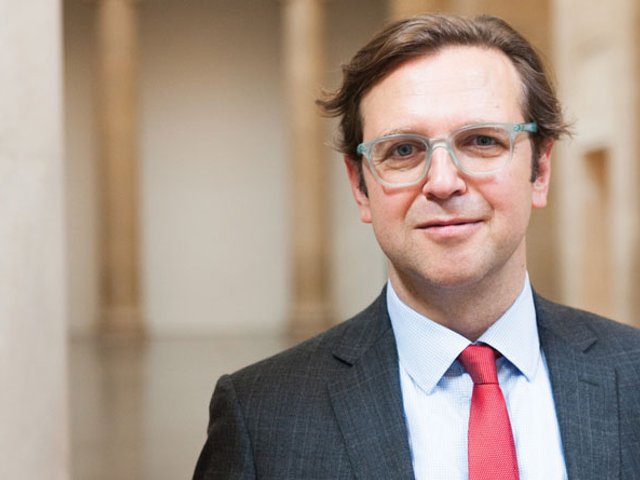The Old Tate. It wasn’t the most appealing nickname to have as the hordes surged to Tate Modern after its opening in 2000. But that’s how the original Tate Gallery on Millbank, then newly returned to its first function as the national gallery of British art, came to be known at the time. I was the press officer at Tate Britain between 2001 and 2005, and one of those charged with keeping people interested in goings-on at Millbank.
We at the gallery knew it was an exciting space and programme, with twice the space for British art, much of it contemporary. You could still cross the Duveen sculpture galleries and move from Hogarth to Hockney in a heartbeat, one of the great charms of the Tate Gallery. Yet there is no doubt that Tate Britain was hit hard by Tate Modern’s opening. The Tate Gallery was averaging close to two million visitors a year in the four years leading up to the split; the figures immediately dropped closer to one million in 2001, the Millbank gallery’s first full year as Tate Britain. It averaged 1.1m visitors in its first five years.
Tate Britain put on some excellent shows of British masters at that time—William Blake (2000) and Thomas Gainsborough (2003) among them. But its emergence from adversity, quite contrary to the “Old Tate” tag, was also the result of a fertile culture for contemporary artists, developed through the Tate Triennial show of contemporary art; yearly commissions in the Duveens; the ongoing Art Now and Art Now Lightbox programmes; a series of live performances; and, of course, the annual Turner Prize.
Artists felt a sense of belonging to the gallery. “In terms of Tate Modern’s effect on the British art world, there is a little bit of a disconnect sometimes,” says the artist Mark Leckey. “[At] Tate Britain, you feel part of that [museum] as an artist, you feel included in that. Tate Modern is a bit offshore, in some way. There’s something quite enigmatic about it.”
In 2003, Leckey created a extraordinary performance work, setting a vast speaker stack into conversation with Jacob Epstein’s hulking sculpture Jacob and the Angel (1940-1). It felt emblematic of Tate Britain’s uniqueness, its peculiar context for artists. “That was a critical part of the launch strategy, even before the enormity of Tate Modern hit us,” says Stephen Deuchar, Tate Britain’s director between 1998 and 2009 and now in charge of the Art Fund. “There was the sense absolutely that this was going to be the home of British art.
"And in the early days all was good, because there was this rule which everyone abided by, which was that contemporary British art exhibitions were only shown at Tate Britain, which was a critically important thing. So that’s why Lucian Freud, Bridget Riley and Wolfgang Tillmans were at Tate Britain. Because there was never any doubt about it, British artists looked to Tate Britain.”
That rule has now been broken with shows of Gilbert and George (2007), Damien Hirst (2012) and Mona Hatoum (now on view, until 21 August) at Tate Modern. Deuchar also points out that Tillmans’s second Tate retrospective will be on Bankside next year. “I think that’s bound to have some impact, but I’m not pessimistic,” he says, adding that “artists who think very deeply about the full spectrum of art history find Tate Britain intriguing”.
Its new director, Alex Farquharson, has joined Tate Britain in a period of flux. After several years in which the gallery appeared to have turned a corner with the public, regularly clocking more than 1.5 million visitors between 2005 and 2012, attendances have been falling—to an 11-year low in 2015, with 1.28 million visitors. Farquharson has taken over from Penelope Curtis, who oversaw an acclaimed collection rehang and building project but faced often quite personal criticism for some of the gallery’s exhibitions.
Tate Britain has come a long way from the Old Tate days, but as Tate Modern again grabs all the attention this summer, the gallery needs to fight to maintain its relevance. Smartly, its 2017 exhibition programme is strong—shows dedicated to the Impressionists in London, Queer British Art, the sculptor Rachel Whiteread, and—particularly—a David Hockney retrospective, all promise potential acclaim and significant and diverse footfall.


